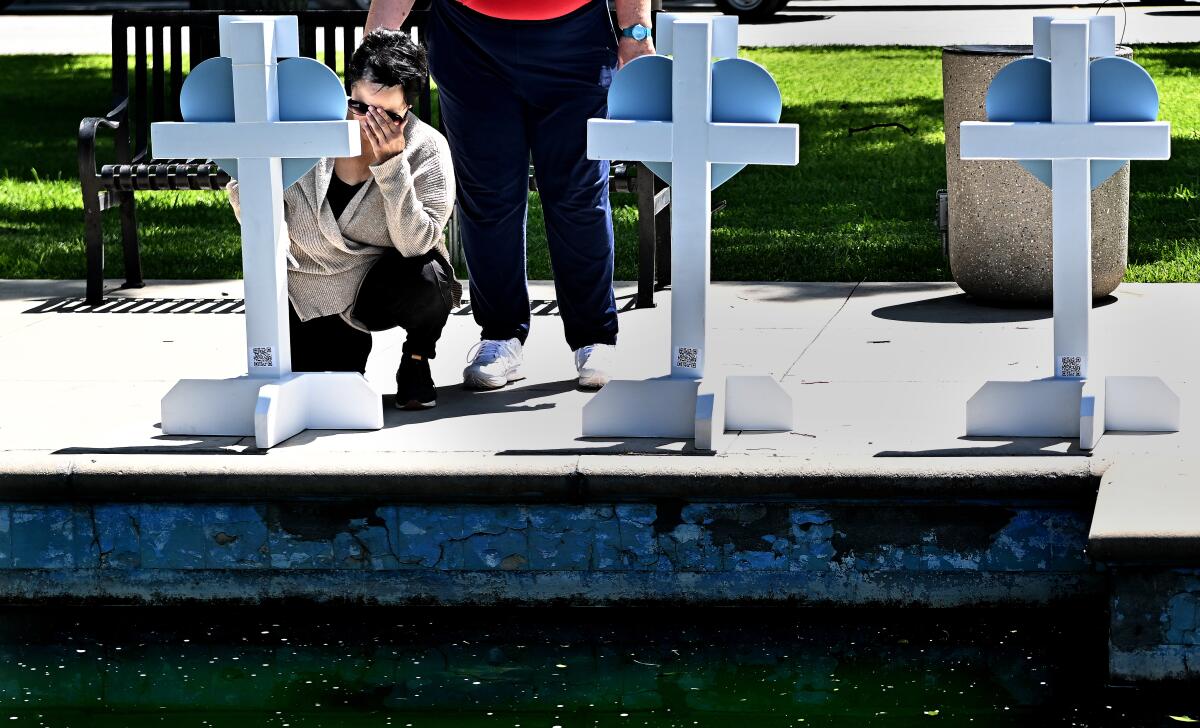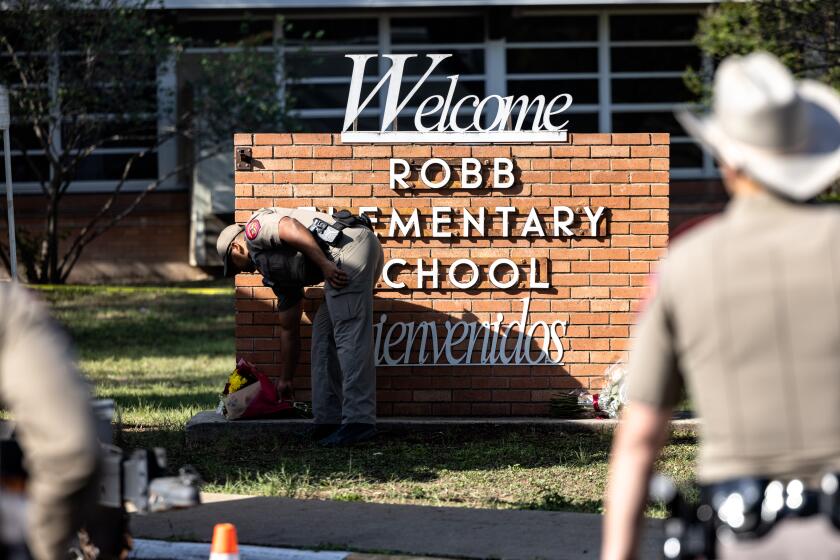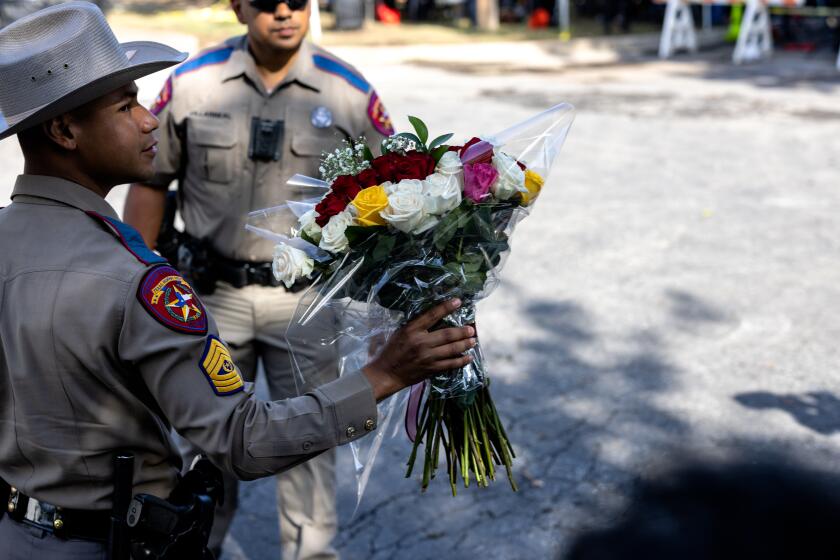Commentary: Can any American parent honestly say school massacres are ‘unimaginable’?

- Share via
“Unimaginable” is a word that’s been thrown around a lot after 19 students, mostly fourth-graders, and two teachers were slaughtered Tuesday in Uvalde, Texas.
Rep. Elise Stefanik of New York, Gov. Kim Reynolds of Iowa, Lt. Gov. Dan Patrick of Texas — all Republicans who have pushed to eliminate sensible gun regulations — use the word to convey their shock, shock that a lot of innocent people would end up dead in a country with more guns than people.
What a funny word to use, “unimaginable.” If only all American families could merely “imagine” the horror rather than experience it, along with the profound grief of finding out that you dropped your kids off to their death at school one morning. I’ve imagined it — this precise scenario, on occasions more frequent than anyone living in a civilized society should.
So many children are dying in school shootings because the U.S. doesn’t focus on prevention. There are ways we can stop these horrific massacres.
I have 10-year-old twins, in fourth grade at the local public school, exactly like those 19 children in Texas murdered Tuesday, days before they were supposed to start summer break.
I’ve imagined my children — and surely other parents have too — spending their final seconds in terrifying uncertainty and pain. After tough mornings getting the kids ready for school (show me parents who claim to remain calm while rushing their kids out of the house, and I’ll show you a liar), I’ve even thought as I watch my kids disappear into their classrooms, “I’d hate for that to be their last memory of me if there’s a mass shooting today.”
And why shouldn’t I think this? It’s not as if these are unfounded fears. Since my children were born, we’ve lived through the national tragedy of Newtown, Conn., in 2012, when 20 first-graders and six staff members were killed by one man who could apply a few pounds of pressure to an assault rifle trigger; and then again in 2018 when 17 students and staff were shot to death at Marjory Stoneman Douglas High School in Parkland, Fla.
I can go back to 1999, when periodic massacres of children were truly unimaginable. It was then that my 11th-grade Spanish teacher sobbed as he discussed what happened at Columbine High School in Colorado, where 12 teenagers my age were murdered. That tragedy came out of nowhere, or at least we were naïve enough to think so.
Then Congress allowed the national assault weapons ban to expire in 2004. Then Newtown happened, and lawmakers put on one of the most brazen displays of ideological extremism in thwarting meaningful gun legislation. Then a woman who harassed a Parkland survivor outside the U.S. Capitol won a seat in Congress.
This is worse than imaginable. It’s reality, and the consequences are predictable.
We’re all talking about mass shootings now, as we should be, but those of us who routinely surrender our children to the care of educators have been dealing with anxiety over gun violence for years.
Perhaps it’s the fate of the United States to watch its soul die along with the 19 students and two adults shot to death Tuesday at an elementary school in Uvalde, Texas.
It doesn’t help that the most visible government response to the carnage has been to order flags lowered to half staff, a conspicuous reminder in places like schools that something’s wrong.
In fact, the day my twins started second grade (their last “normal” first day of school before the pandemic), the American and state flags that wave above the front gate were lowered. The occasion? Not one, but two mass shootings: Twenty-three people had been killed that August in a racist attack targeting Latinos in El Paso, Texas. The day after that shooting, nine people were killed in Dayton, Ohio.
What an auspiciously American way to start a school year.
For now, as my children’s school careens toward summer vacation, things look mostly normal, though there were noticeably fewer kids in attendance at the morning dropoffs this week. Mrs. B and Mr. Manny, surely the most dedicated support staff in Alhambra public schools, still greet each student by name, in English or Spanish as needed, and parents still linger to talk as our kids walk past the gates.
We’re clinging to these comforts of a community. But it’s not hard to imagine this life, based on a fundamental assumption of personal safety, destroyed in minutes by a shooter, all of it ebbing away.
After Uvalde, will schools become less inviting to parents and other family members? After Laguna Woods, will churches regard visitors with more suspicion? After Buffalo, will grocery stores near “food deserts” close shop? Hard to say. But we’ll continue taking our children to school, buying groceries and attending church because we need to.
As a high school student in 1999, I was upset, but I didn’t feel unsafe after the Columbine massacre. Now, as a parent in 2022, the slaughter of 19 schoolchildren two time zones away feels very close to home.
It certainly doesn’t feel “unimaginable.”
More to Read
A cure for the common opinion
Get thought-provoking perspectives with our weekly newsletter.
You may occasionally receive promotional content from the Los Angeles Times.













